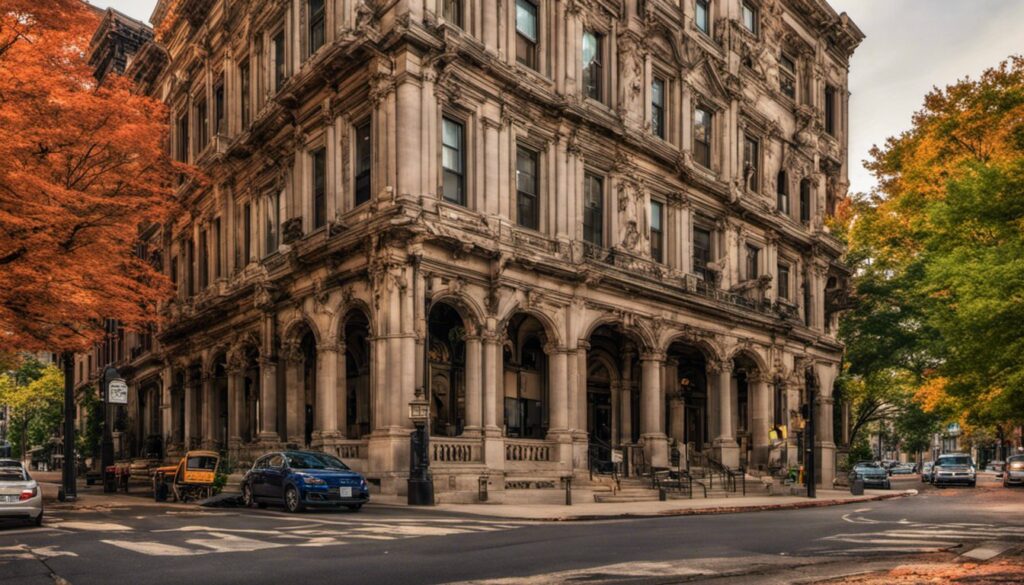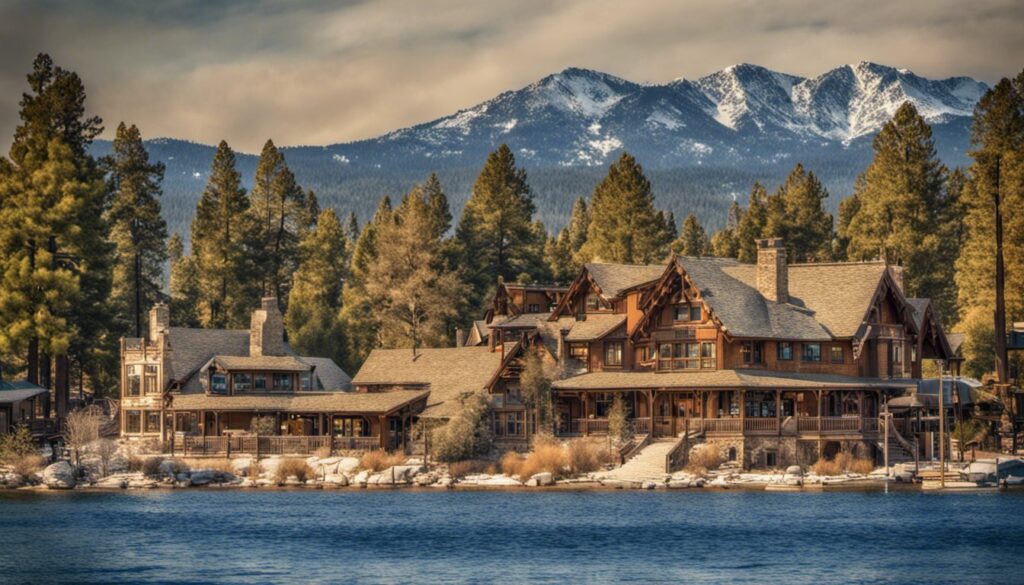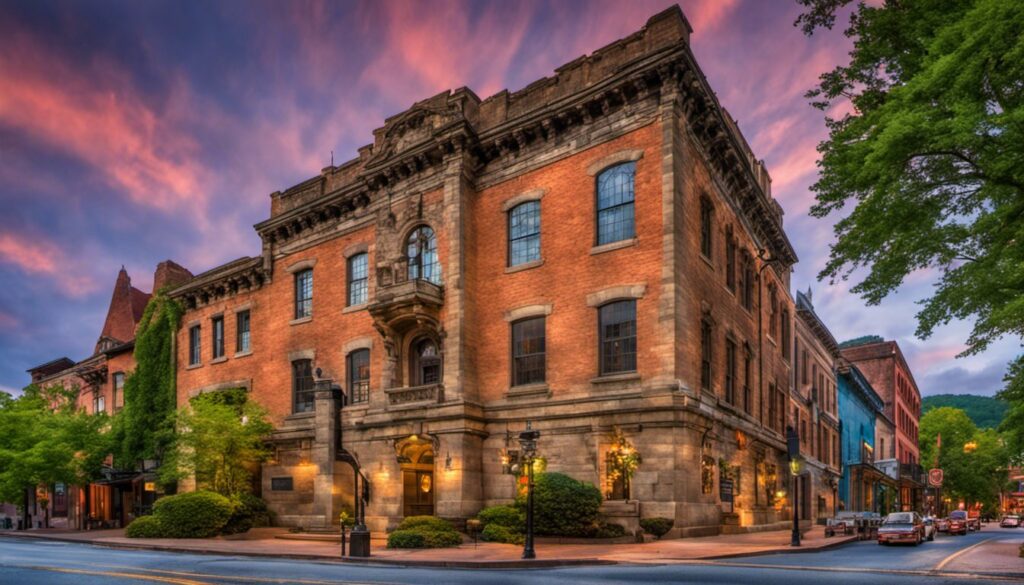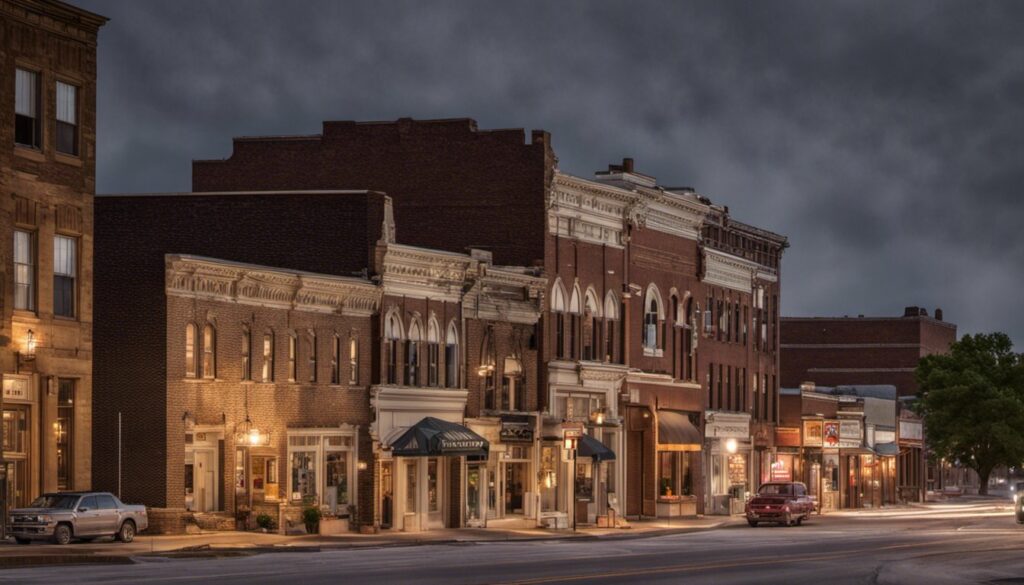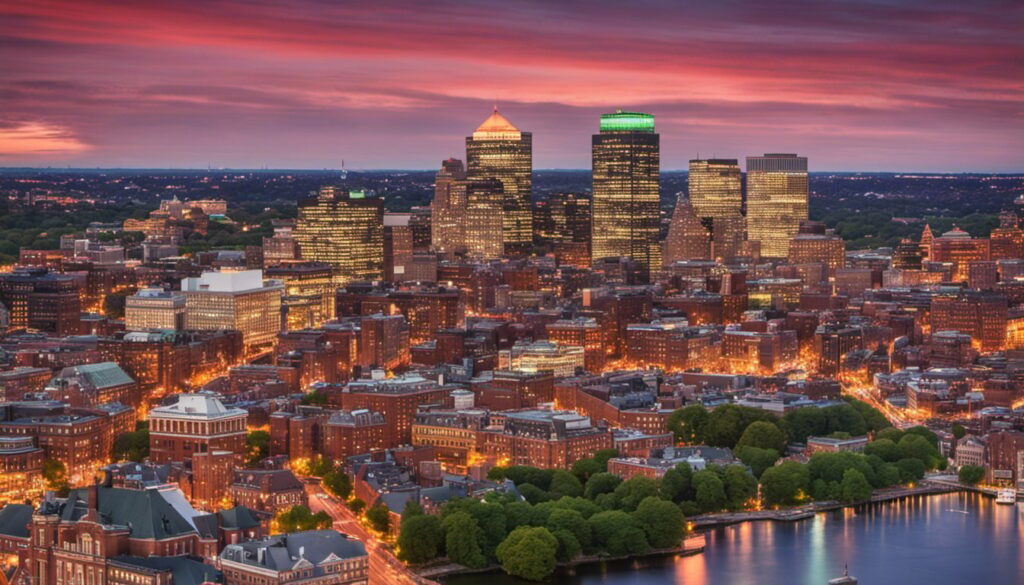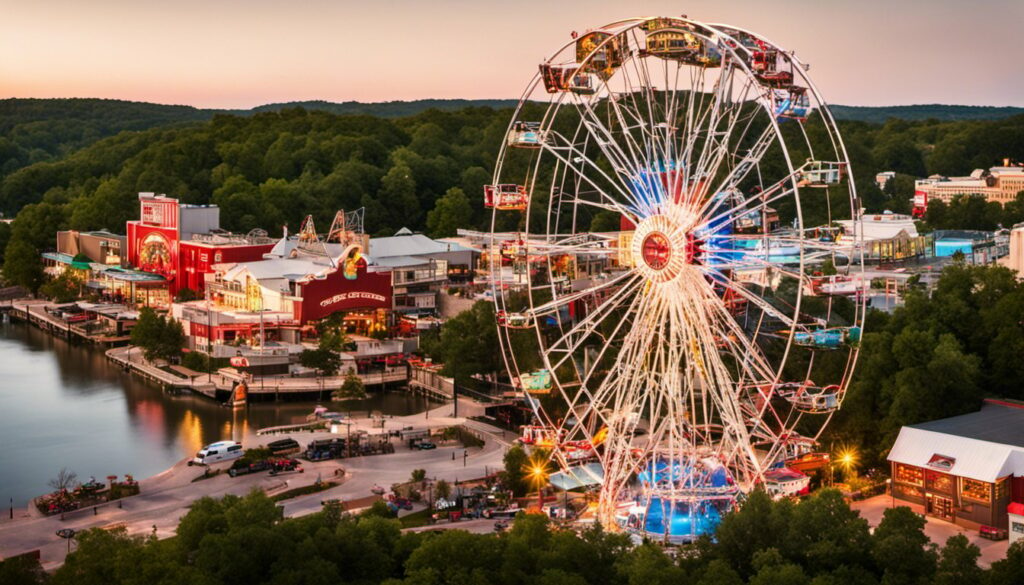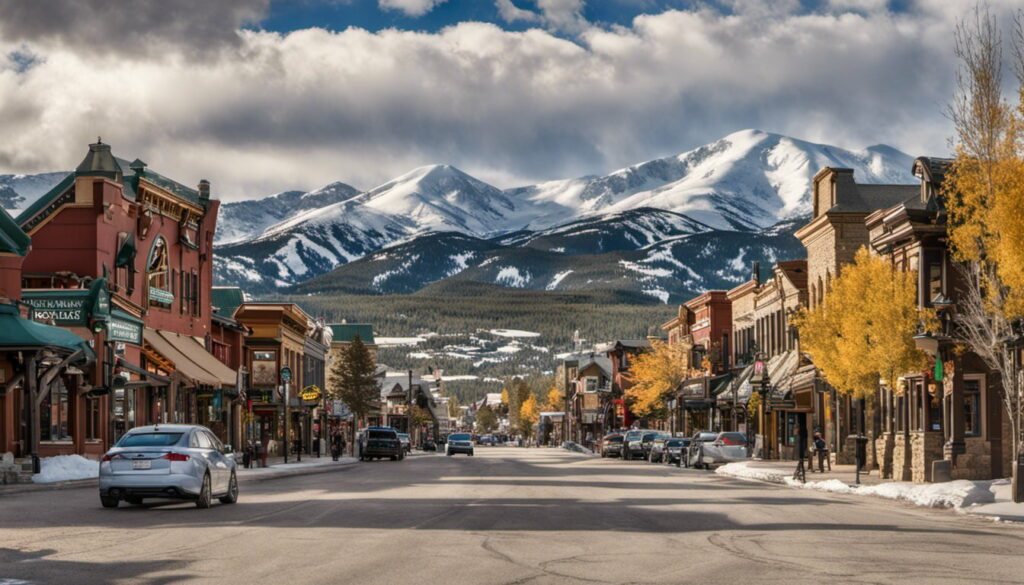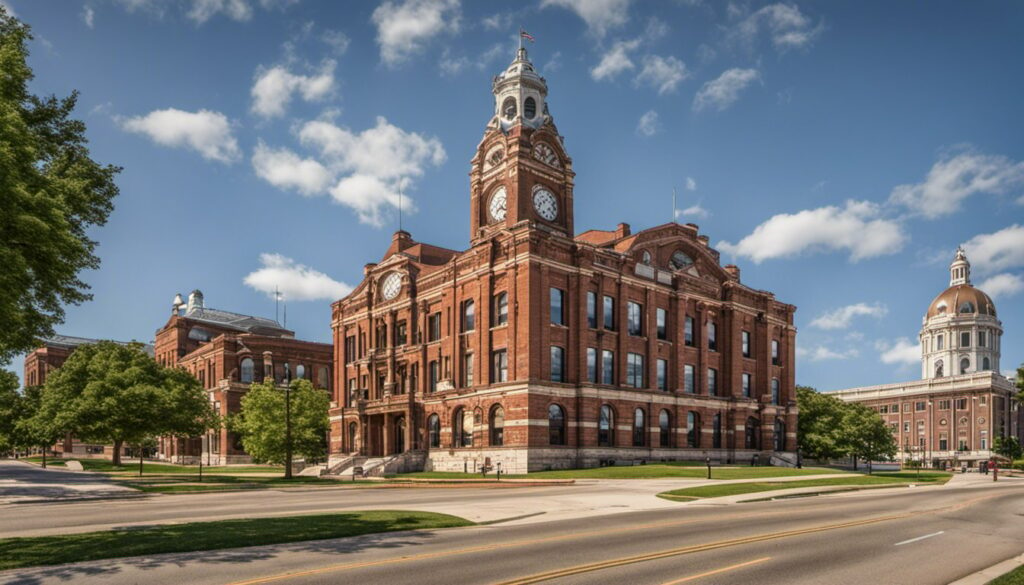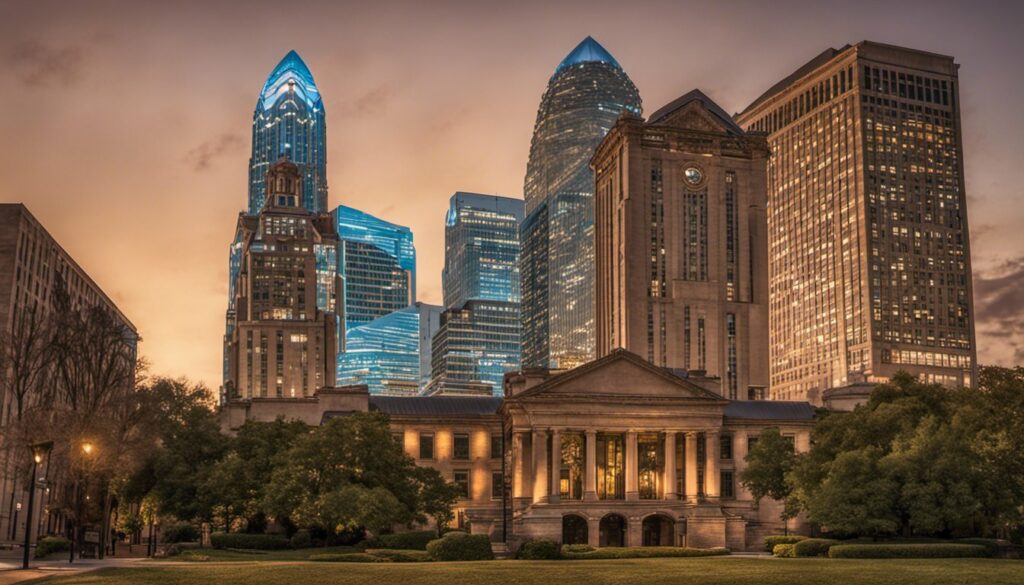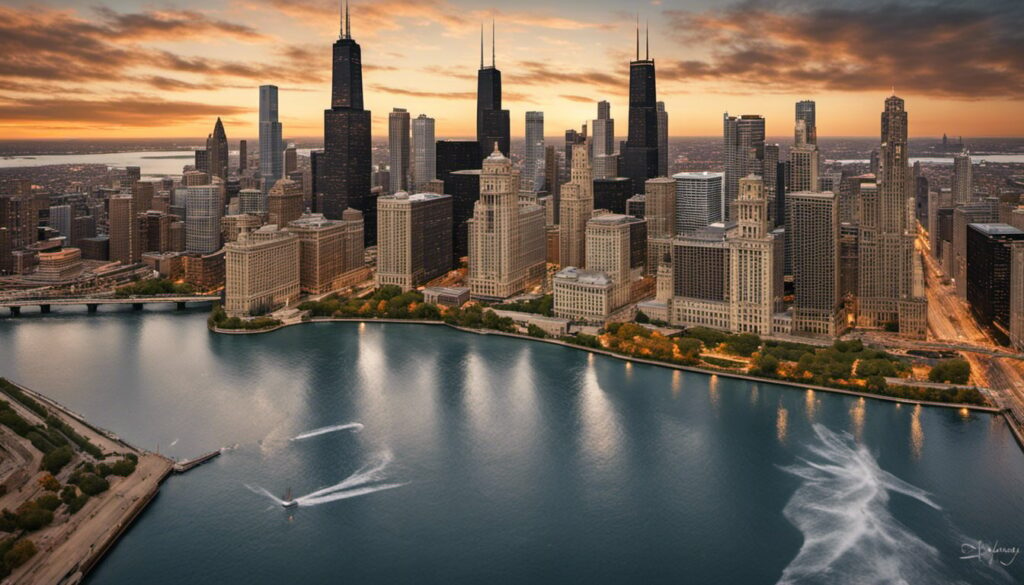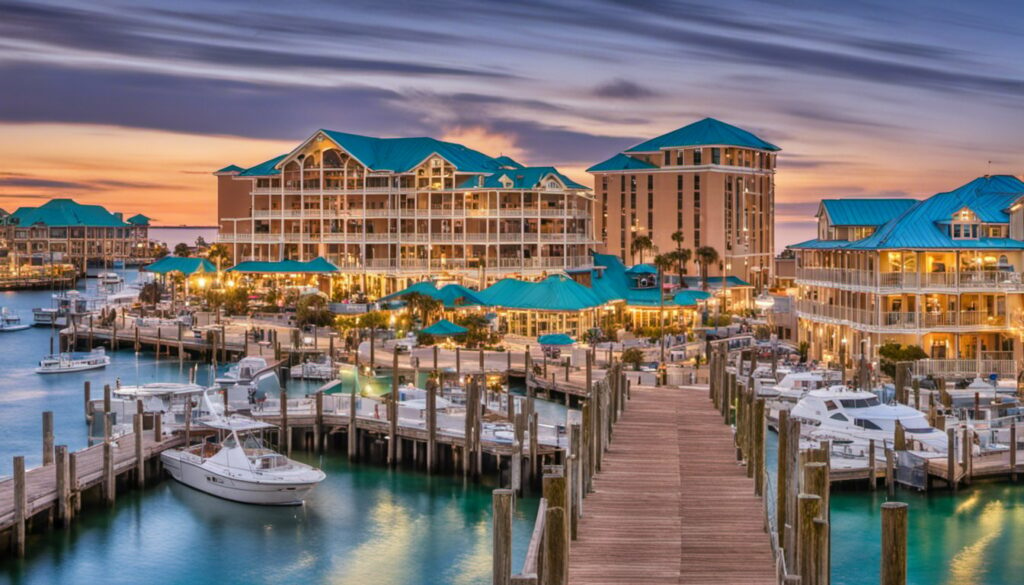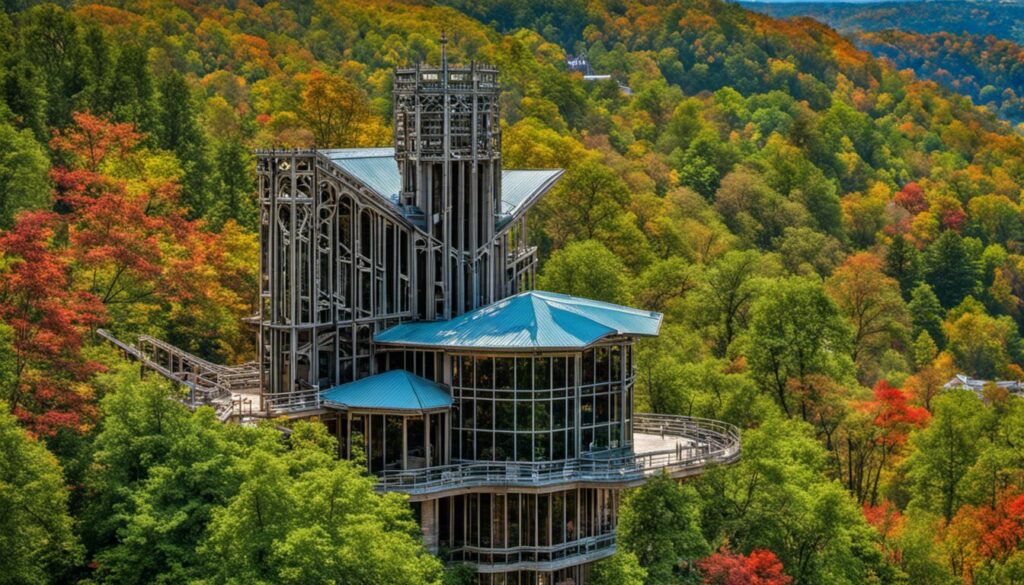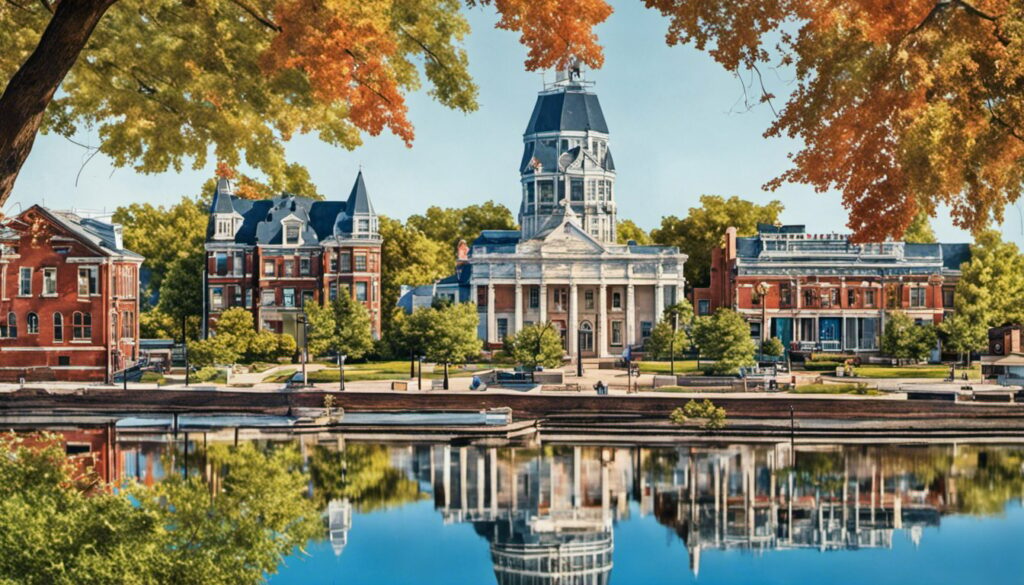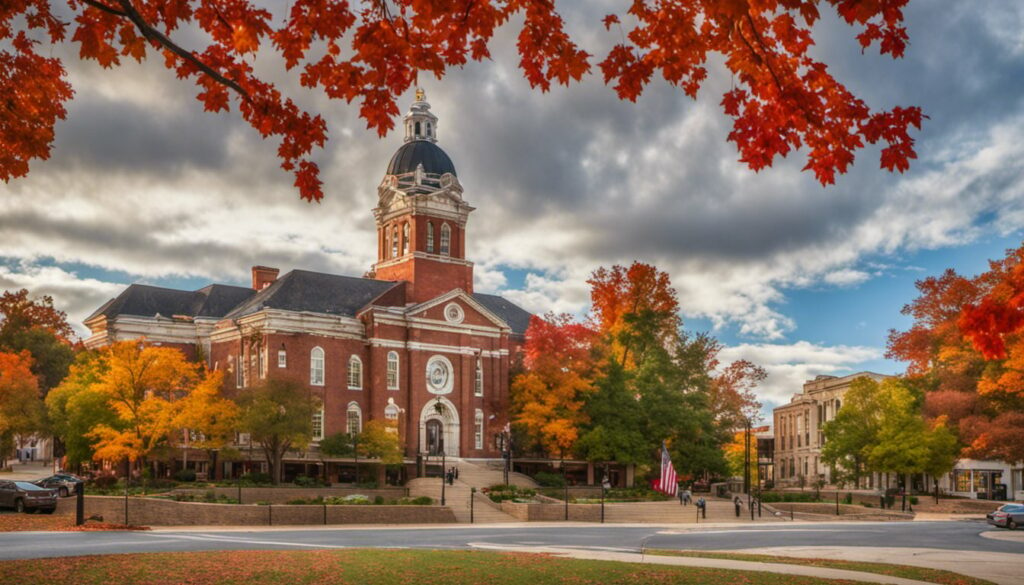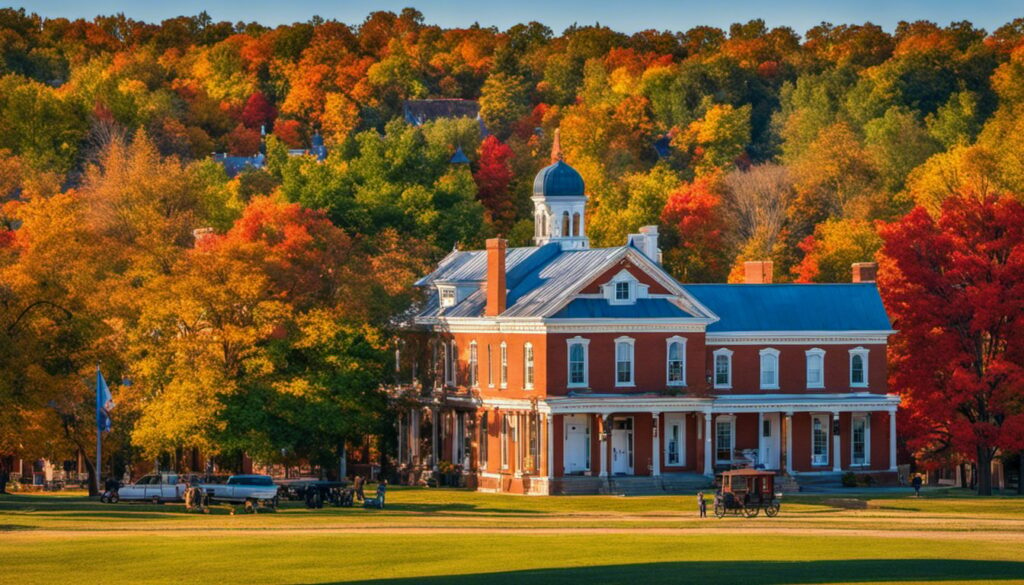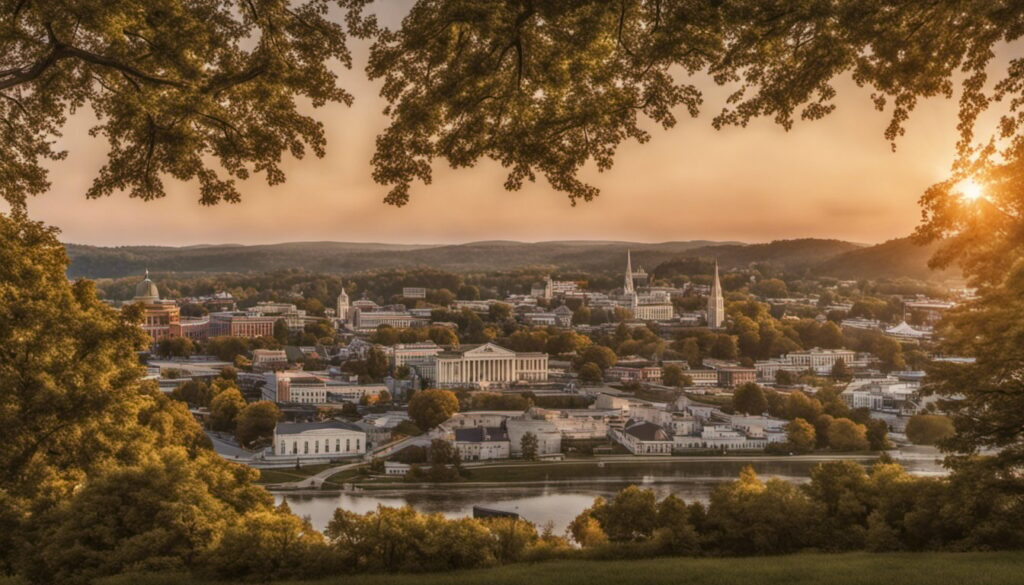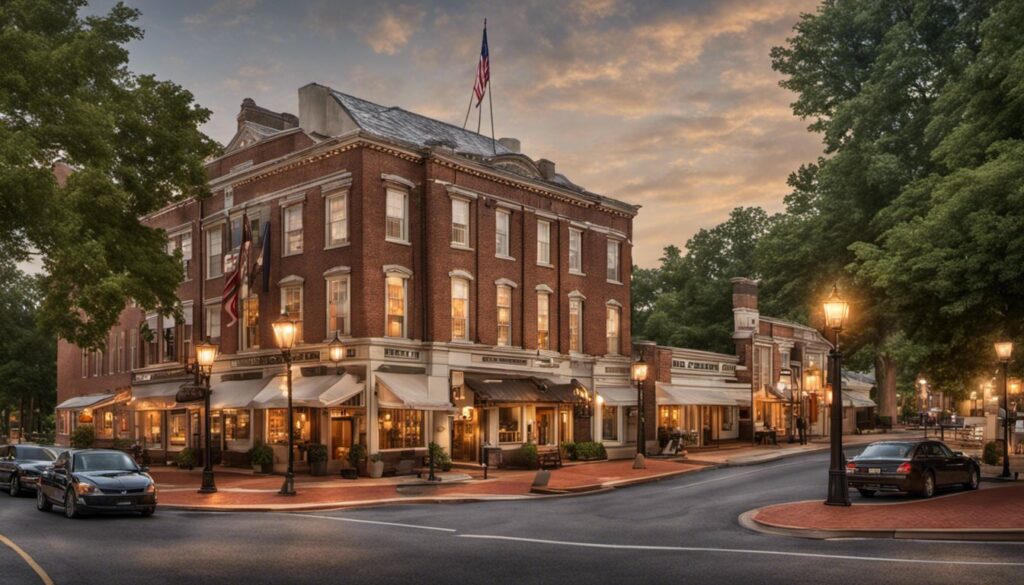Table Of Content
- Explore Newark’s Rich History: A Listicle of Famous Landmarks and Historical Sites
- Newark’s Historical Significance
- Exploring Newark’s National Historic Landmarks
- Historic Sites Around Newark
- Archaeological Sites in Newark
- Newark’s Connection to Famous Personalities
- Historic Parks in New Jersey
- Historic Landmarks Beyond Newark
- Exploring Other Cities in New Jersey
- Conclusion
- Frequently Asked Questions
Explore Newark’s Rich History: A Listicle of Famous Landmarks and Historical Sites


If you’re planning a trip to Newark, New Jersey, you won’t be disappointed by the city’s historical significance. From national historic landmarks to famous landmarks, Newark has a rich history that’s worth exploring. In this listicle, we’ll take a look at some of the top historical sites and famous landmarks in Newark, New Jersey, that you won’t want to miss.
Exploring Newark’s national historic landmarks is a great way to learn about the city’s history. The city is home to several national historic landmarks, including the Old First Presbyterian Church, the Newark Museum, and the Newark Symphony Hall. These landmarks offer a glimpse into Newark’s past and are a must-see for anyone interested in history.
In addition to national historic landmarks, Newark is also home to several historic sites around the city. From the Four Corners Historic District to the Lincoln Park Historic District, there are plenty of sites to explore. Whether you’re interested in architecture or just want to learn more about Newark’s history, these sites are definitely worth a visit.
Key Takeaways
- Newark, New Jersey, has a rich history that’s worth exploring.
- The city is home to several national historic landmarks, including the Old First Presbyterian Church and the Newark Museum.
- Newark is also home to several historic sites around the city, including the Four Corners Historic District and the Lincoln Park Historic District.
Newark’s Historical Significance


Newark, New Jersey, is a city steeped in history, with numerous landmarks and historical sites that tell the story of its past. As you explore the city, you’ll discover the rich history of Newark, from its founding in 1666 by Puritan settlers to its role in the Revolutionary War.
One of the most significant figures in Newark’s history is George Washington, who visited the city several times during the Revolutionary War. In fact, Washington spent more time in Newark than any other city in New Jersey. During his visits, he stayed at the Old Stone Schoolhouse, which still stands today and is a popular tourist attraction.
In addition to its connections to the Revolutionary War, Newark has also played an important role in the development of American art. The city is home to the Newark Museum, which features a vast collection of American art, including works by renowned artists such as Georgia O’Keeffe and John Singer Sargent. The museum also houses a collection of Tibetan art, making it a unique destination for art lovers.
Overall, Newark’s historical significance cannot be overstated. Whether you’re interested in the Revolutionary War or American art, there’s something for everyone in this vibrant city. So, take some time to explore Newark’s landmarks and historical sites and discover the rich history of this fascinating city.
Exploring Newark’s National Historic Landmarks


If you’re a history buff, you’re in for a treat in Newark, New Jersey. The city is home to many National Historic Landmarks, each with its unique story and significance. Here are some of the must-visit landmarks that you should explore:
Newark Museum


The Newark Museum is a world-renowned museum that houses an extensive collection of art and artifacts from around the world. The museum has over 80 galleries that showcase American, Asian, African, and Classical art, as well as science exhibits. The museum is also home to the Ballantine House, a restored Victorian mansion that offers a glimpse into the life of a wealthy family in the late 19th century.
Clark Thread Company Historic District


The Clark Thread Company Historic District is a National Historic Landmark that is home to several buildings that were once part of the Clark Thread Company. The district includes the Clark Thread Company Mill, which was built in the late 19th century and is now home to loft apartments. The district also includes several other buildings that were used for manufacturing thread.
Newark Penn Station


Newark Penn Station is a transportation hub that was built in the early 20th century. The station is a National Historic Landmark and is known for its Beaux-Arts architecture. The station serves as a major transportation hub for New Jersey Transit and Amtrak, making it a crucial part of the region’s transportation infrastructure.
Exploring Newark’s National Historic Landmarks is a great way to learn about the city’s rich history and culture. Whether you’re interested in art, architecture, or transportation, there’s something for everyone to enjoy. So, grab your camera and head out to explore these amazing landmarks!
Historic Sites Around Newark


If you’re a history buff, you’ll be thrilled to know that Newark has several historic sites that you can visit. Here are three historic sites that you shouldn’t miss.
Abbott Farm Historic District


The Abbott Farm Historic District is located in Hamilton Township, Mercer County. It was added to the National Register of Historic Places in 1982. The district consists of 13 buildings, including the Abbott Farmhouse, which was built in the 18th century. The farmhouse has been restored and is now a museum that showcases life in the 18th century. You can also take a guided tour of the district to learn more about the history of the area.
Monmouth Battlefield State Park


Monmouth Battlefield State Park is located in Manalapan Township, Monmouth County. It was the site of one of the largest battles of the American Revolution. The park has several walking trails that take you through the battlefield, and there are also several monuments and memorials that you can visit. If you’re interested in history, you’ll love the interpretive center, which has exhibits and artifacts from the battle.
Thomas Edison National Historical Park


The Thomas Edison National Historical Park is located in West Orange, Essex County. It was the home and laboratory of Thomas Edison, the inventor of the light bulb, phonograph, and motion picture camera. The park has several exhibits and artifacts that showcase Edison’s inventions and life. You can take a guided tour of the laboratory and see some of Edison’s original equipment and inventions.
These historic sites are just a few of the many that you can visit around Newark. Whether you’re interested in the American Revolution, 18th-century life, or the inventions of Thomas Edison, there’s something for everyone. Don’t miss the chance to explore the history of New Jersey and the United States.
Archaeological Sites in Newark


Newark, New Jersey is home to a number of fascinating archaeological sites that offer a glimpse into the area’s rich history. One of the most notable sites is located at the Abbott Farm Historic District.
Archaeological Site at Abbott Farm Historic District


The Abbott Farm Historic District is a 312-acre site that contains a number of important archaeological features. The site was once home to Native American settlements, and artifacts found here date back as far as 3,000 years.
Excavations at the site have uncovered a variety of artifacts, including pottery, stone tools, and animal bones. These artifacts provide insight into the daily lives of the people who once lived here.
The Abbott Farm Historic District is also home to the remains of several colonial-era buildings. These buildings offer a glimpse into Newark’s past as a bustling colonial town.
If you’re interested in Newark’s history, a visit to the Abbott Farm Historic District is a must. The site offers a unique opportunity to see firsthand the artifacts and structures that tell the story of Newark’s past.
Newark’s Connection to Famous Personalities


Newark, New Jersey has been home to many famous personalities over the years. From scientists to musicians, Newark has played host to some of the most influential people of our time. Here are a few famous Newark residents and their legacies:
Albert Einstein House


Did you know that Albert Einstein lived in Newark for a brief period of time? In 1933, Einstein moved to the United States to escape Nazi Germany. He settled in Princeton, but before that, he briefly lived in Newark. The house he lived in is still standing today and has been designated a historic site.
The Einstein House is located at 112 Mercer Street in Princeton, New Jersey. It is a modest two-story house that Einstein lived in with his wife and stepdaughter. The house is open to the public and is a great place to learn about Einstein’s life and work.
Thomas Edison’s Legacy


Another famous inventor who has ties to Newark is Thomas Edison. Edison was born in Milan, Ohio, but his family moved to Port Huron, Michigan when he was a child. Edison later moved to Newark, where he worked as a telegraph operator and began his career as an inventor.
Edison’s legacy can still be seen in Newark today. The Edison Storage Battery Company was located in Newark, and the company played a key role in the development of the electric car. Edison’s laboratory in West Orange, New Jersey is also a popular tourist attraction.
In addition to his work as an inventor, Edison was also a philanthropist. He donated money to help build the Newark Museum, which is still open today and features a collection of American art and decorative arts.
As you can see, Newark has a rich history when it comes to famous personalities. From Albert Einstein to Thomas Edison, these individuals have left a lasting legacy on the city and the world.
Historic Parks in New Jersey


New Jersey is home to several historic parks that offer a glimpse into the state’s rich history. From the Revolutionary War to the Industrial Revolution, these parks showcase the stories of the people and events that shaped the state. Here are three historic parks in New Jersey that you don’t want to miss:
Morristown National Historical Park


Morristown National Historical Park is located in Morristown, New Jersey. This park preserves the history of the Continental Army’s winter encampment during the Revolutionary War. The park includes several historic sites, such as the Ford Mansion, which served as George Washington’s headquarters during the winter of 1779-1780. You can also visit the Jockey Hollow Visitor Center to learn more about the soldiers who endured the harsh winter conditions.
Paterson Great Falls National Historical Park


Paterson Great Falls National Historical Park is located in Paterson, New Jersey. This park preserves the history of the Industrial Revolution and the role that Paterson played in it. The park includes the Great Falls of the Passaic River, which powered the mills that produced textiles, locomotives, and other goods. You can also visit the Paterson Museum to learn more about the city’s history.
Palisades Interstate Park


Palisades Interstate Park is located in Bergen County, New Jersey. This park offers stunning views of the Hudson River and the New York City skyline. The park includes several historic sites, such as the Women’s Federation Monument and the Kearney House. You can also hike the trails that wind through the park to explore the natural beauty of the area.
These historic parks in New Jersey offer a unique opportunity to explore the state’s rich history. Whether you’re interested in the Revolutionary War, or the Industrial Revolution, or just want to enjoy the natural beauty of the area, there is something for everyone to enjoy.
Historic Landmarks Beyond Newark


If you’re looking to explore beyond the city limits of Newark, New Jersey, there are plenty of historic landmarks worth visiting. From iconic national monuments to quirky roadside attractions, these landmarks offer a glimpse into the rich history and culture of the Garden State.
Statue of Liberty National Monument


No visit to New Jersey is complete without a trip to the Statue of Liberty National Monument. Located on Liberty Island in New York Harbor, this iconic statue has been a symbol of freedom and democracy for over a century. You can take a ferry from Liberty State Park in Jersey City to the island, where you can explore the statue and learn about its history at the museum.
Ellis Island


Another must-visit landmark in the area is Ellis Island, which served as the gateway to America for millions of immigrants in the late 19th and early 20th centuries. Today, the island is home to a museum that tells the story of the immigrants who passed through its halls and the challenges they faced in their new home.
Barnegat Light


For a taste of New Jersey’s coastal history, head to Barnegat Light. This picturesque lighthouse has been guiding ships along the coast since 1859, and it’s still in operation today. You can climb to the top for a stunning view of the surrounding area, or explore the museum inside to learn more about the lighthouse’s history.
Lucy the Margate Elephant


If you’re looking for a more offbeat landmark to visit, check out Lucy the Margate Elephant. This six-story-tall wooden elephant was built in 1881 as a novelty hotel room, and it’s been a beloved landmark ever since. Today, you can take a tour of the elephant and learn about its history and significance to the local community.
No matter which of these landmarks you choose to visit, you’re sure to be impressed by the rich history and unique culture of New Jersey.
Exploring Other Cities in New Jersey


If you’re interested in exploring more of New Jersey’s history, there are plenty of other cities and towns worth visiting. Here are a few options to consider:
Historic Sites in Trenton


Trenton, the state capital of New Jersey, is home to several historic sites that are worth visiting. The Old Barracks Museum, for example, is a recreation of the barracks that housed British soldiers during the French and Indian War. The Trenton Battle Monument, which honors the Continental Army’s victory over the British in 1776, is another must-see attraction. You can also visit the William Trent House Museum, which was built in 1719 and is one of the oldest buildings in Trenton.
Atlantic City’s Boardwalk


Atlantic City is known for its famous boardwalk, which stretches for miles along the beach. The boardwalk is home to several historic landmarks, including the Boardwalk Hall, which was built in 1929 and is now a National Historic Landmark. You can also visit the Absecon Lighthouse, which was built in 1857 and is the tallest lighthouse in New Jersey. Other notable attractions include the Steel Pier, which was built in 1898 and has been an amusement park ever since.
Cape May Point Landmarks


Cape May Point is a historic seaside town that’s home to several landmarks and attractions. The Cape May Lighthouse, which was built in 1859, is one of the most popular attractions in the area. You can also visit the Emlen Physick Estate, which was built in 1879 and is now a museum. Other notable landmarks include the World War II Lookout Tower, which was built in 1942 and was used to spot German submarines during the war.
Whether you’re interested in history, or architecture, or just want to explore more of New Jersey, there are plenty of options to choose from. From Trenton’s historic sites to Atlantic City’s famous boardwalk and Cape May Point’s landmarks, there’s something for everyone to enjoy.
Conclusion
Congratulations! You have just explored some of the most fascinating historical sites and famous landmarks in Newark, New Jersey. As you have learned, Newark is a city rich in history and culture, and it has played a significant role in shaping the United States.
From the founding of Newark by Puritans in 1666 to the construction of the world-renowned Newark Penn Station in 1935, this city has been a hub of innovation and progress for centuries. You have seen how the city has preserved its architectural heritage and how it has transformed its industrial past into a thriving cultural scene.
Whether you are a history buff or just looking for a fun day out, Newark has something to offer everyone. You can explore the city’s diverse neighborhoods, visit its museums and galleries, or simply enjoy a stroll through one of its many parks.
So, what are you waiting for? Plan your trip to Newark, New Jersey today and discover the rich history and culture that this city has to offer.
Frequently Asked Questions
What are the top historical sites to visit in Newark, NJ?
Newark, NJ is home to many historical sites that you can visit. Some of the top historical sites that you should not miss include the Newark Museum, the Military Park, and the New Jersey Historical Society. These sites offer a glimpse into the rich history of Newark, NJ.
Which famous landmarks should I not miss when visiting Newark, NJ?
Newark, NJ is also home to several famous landmarks that you should not miss. These landmarks include the Cathedral Basilica of the Sacred Heart, the Prudential Center, and the New Jersey Performing Arts Center. These landmarks are not only significant to the history of Newark, NJ, but they also offer a unique experience.
What makes Branch Brook Park a must-see attraction in Newark, NJ?
Branch Brook Park is a must-see attraction in Newark, NJ because it is the largest public park in the city and is home to the largest collection of cherry blossom trees in the country. The park also has several lakes, bridges, and sculptures that make it a beautiful and relaxing place to visit.
Can you recommend any walking tours of historic Newark, NJ?
Yes, there are several walking tours of historic Newark, NJ that you can take. The Newark Downtown District offers a guided walking tour of downtown Newark that includes stops at several historic sites. The Newark Preservation and Landmarks Committee also offers a walking tour of historic neighborhoods in Newark.
What is the history behind the National Newark Building?
The National Newark Building is a historic skyscraper located in downtown Newark, NJ. It was built in 1931 and was the tallest building in the city until 1969. The building was designed by John H. & Wilson C. Ely and features an Art Deco style. It was added to the National Register of Historic Places in 1977.
Are there any lesser-known but still significant historical sites in Newark, NJ?
Yes, there are several lesser-known but still significant historical sites in Newark, NJ. These include the Krueger Mansion, the Ballantine House, and the Newark Public Library. These sites offer a unique perspective on the history of Newark, NJ, and are worth visiting if you have the time.

